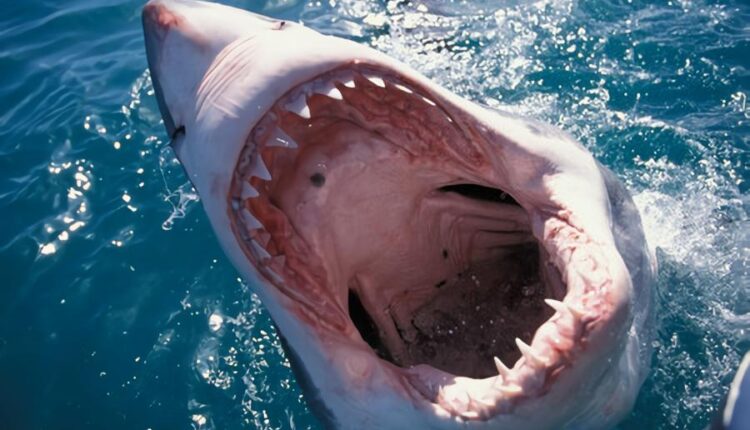Do Sharks Have Tongues? The Answer Might Surprise You

Do sharks have tongues? I know you’re curious, and I’m curious as well.
Sharks do, in fact, have tongues, and they utilize them for some fairly crucial things!
In this blog article, we’ll look at the following issues: Is it true that sharks have tongues? What does a shark’s tongue look like? Is it possible for sharks to taste with their tongues in the same way that humans do? What are the names of the sharks that utilize their tongues? Is it possible for a shark to bite its tongue? Is it possible for a shark to put its tongue out like a human? Is it true that all sharks move their mouths the same way humans do? What is the appearance of a shark’s tongue?
Continue reading to learn more about the most adaptable bodily parts of these fascinating creatures!
Do Sharks Have Tongues?
Yes, sharks do have tongues. Sharks are predatory creatures that utilize their jaws to catch prey and other things in their immediate vicinity.
The shark’s mouth is the only hole in its skull, and it includes sharp teeth that are used to shred flesh off its prey.
They do not chew their meal, instead swallowing enormous chunks of meat before chewing again.
The shark’s tongue serves as a vital sensory organ.
It aids them in locating their prey in the hazy waters. Is it feasible to figure out what sort of food they’re eating that will assist them ride their bike?
Do sharks have tongues because they do not chew or ground the flesh in their jaws, instead swallowing it whole?
Yes! The papillae are a pair of long, sandpaper-textured organs found in a shark’s mouth.
That stretches over the floor near its neck, catching any stray parts before it swallows again.
When dining on live food, these muscular structures also force water back into the fish’s mouth cavity.
assisting in the removal of dirt from the teeth and gills As part of the respiration process, essential oxygen is provided.
For What Purpose Do Sharks Have Tongues?
Before devouring anything, a shark’s tongue lets it taste, touch, smell, and feel it.
Wrapping around an item in the manner of an octopus captured at the ocean floor.
It moved items closer with its tentacles so it could grip onto them more easily.
Whether it’s a hammerhead shark, tiger shark, or great white shark, they’re all dangerous.
Each species’ tongue is more sensitive to the senses than ours.
For a variety of reasons, sharks have tongues. Because sharks can’t chew, this includes tasting food before swallowing it. As a result, they prioritize flavor above consumption. With one exception, they use touch to sense the world around them, just like humans.
Sharks do not have taste buds in the same way that humans do. They still use their tongues to explore the water’s currents to smell, touch, and discover prey.
Can Sharks Taste Using Their Tongue? Do They Have Taste Buds?
Sharks lack taste buds but do have sensory cells that allow them to sense changes in the water. Sharks have the ability to detect compounds dissolved in blood and other substances.
Before the chemical changes reach their lips, these cells detect them. And what if a shark decides to devour something because of this data? As they go closer, they’ll use their tongue to sniff what’s around them or touch for texture.
Sharks still rely on their sense of smell to locate food sources (especially if they lack eyesight). Its long and narrow feelers, on the other hand, serve a significant function. It detects chemical signals from other organisms on the water’s surface.
Lorenzini Ampullae are a kind of ampullae found in these species. Which is made up of tiny sensory cells clustered along the side of the nose.
These sensory cells can detect substances in extremely low quantities. The receptor responds by sending a signal from its nucleus to the olfactory bulb, a component of the brain.
The shark will then recall whatever odor was discovered by linking it with one of its own scents (e.g., rotten eggs).
Sharks lack taste buds, yet they detect the presence of food in different ways than humans. This enables them to locate prey buried in sand or dirt on a beach.
As a result of their system of lateral lines. They can smell and feel vibrations down the length of their body, which extends from head to tail.
When divers placed out bait to observe shark eating behavior, they discovered this. Sharks are typically successful at locating live fish that have been buried behind rocks and sand.
I was astounded the first time I witnessed how sharks could hunt without seeing what was going on around them!
Taste is a sense that humans don’t get from a shark’s tongue since it lacks taste buds.
Why Do Sharks Love The Taste Of Blood?
Sharks have a sense of taste, despite not having the same taste and smell receptors as humans.
Sharks don’t have the same ability as humans to thrust their tongue out. They do, however, use electroreceptors in their lips to grab prey. This also aids in the detection of electric fields emitted by tiny fish in murky water.
These shark hunters employ ampullae of Lorenzini, which are sensory organs. They have them everywhere over their body, and they use them to discover food on the ocean floor that is concealed from view.
The tongues of sharks also include an organ. This aids them in detecting compounds found in water, such as blood or ammonia. Their other senses are integrated with their chemical sense. This allows sharks to choose what sort of prey is best for them to hunt down at any given time.
Sharks were once supposed to be blind and unable to move their mouths. However, we now know that sharks have a sense of taste in addition to sight, which allows them to find their prey.
Sharks That Use Their Tongue?
Sharks utilize their tongues in a variety of ways. The sand tiger and nurse sharks are known to do so, while others, such as the whale shark, are not.
They can be used to find prey in muddy waters or to taste it before biting into it with their teeth.
Do Sharks Bite Their Tongue?
Humans have a greater range of voluntary movement than sharks. Their mouths, however, may move from side to side.
Sharks may bite their tongues when attempting to close in on prey or while devouring food.
It’s unclear how frequently this occurs in nature because it would require examining dead animals for signs of damage, which hasn’t been done; however, some experts believe shark bites are self-inflicted wounds rather than attacks by other predators or defensive measures against biting prey (think of dogs chewing themselves!).
These unintentional bites cause injury to certain species. Because of characteristics such as jaw and tooth form.
Can Shark Stick Their Tongue Out?
Sharks also have taste receptors on their tongues, allowing them to detect and taste prey while hunting.
The majority of people are unaware of this fact regarding sharks. They do, however, have additional pairs of teeth behind their upper jaw that are utilized for biting.
This allows them to catch prey and hold it between the two rows of teeth that face front. Then they draw the animal towards their mouth with their additional set of teeth.
Sharks such as nurse sharks and whale sharks are among them. When searching for food or when threatened by other animals, they utilize their tongues.
Great white sharks and hammerhead sharks, for example. When seeking prey, they are known to protrude out their tongues.
Their rows of specialized teeth operate together. Water filled of little fish and shrimp-like animals known as krill is sucked up by this device. Changes in pressure can be used to identify this. Its fast-moving mouth creates waves, which generate this.
The bonnethead shark is a separate species of shark. His large nose-shaped snout is also used to identify prey in the sand. And has been observed doing so while pushing their tongue out of their mouth (but, other sharks do not do it).
Can Sharks Move Their Tongues as Humans?
Because sharks lack a jaw joint, they cannot open and close their mouths like humans. Because of the cartilage that joins their jaws to the skull, they can only move them from side to side.
Sharks, like many other creatures, utilize their tongues. However, it is not the same form as a human tongue. Because different animals have different tooth forms. This restricts how much of its mouth we can see when it opens for prey.
There are rows of sharp, pointed teeth on the shark’s tongue. Along with tiny flat blades known as basihyal. These denticles are used to scrape food off of hard surfaces such as rocks or the bottoms of coral reefs.
Sharks would be unable to put their mouths out like humans due to these characteristics. Without endangering yourself (think of your teeth scraping against a metal doorknob).
What Does a Shark Tongue Look Like?
The tongue of a shark is a fleshy, muscular organ that extends from the shark’s mouth and moves around to acquire food.
The tongues of certain sharks are short, whereas those of others are long. The length of their taste buds is influenced by the size of their jaws.
With a reduced jaw, there are fewer sensory organs on the tongue. As a result, it relies on its sense of smell for hunting. Sharks have shorter tongues than other species with larger tongues, such as great whites and bulls.
The form of the animal varies according on the species. At the end of some, there will be one or two prongs. Others, on the other hand, may create irregular forms that resemble a claw-like appendage attached to their lips. Varied sorts of animals, like humans, have different mouths.
The “lamella” is the tip of a shark’s tongue. It possesses a tooth-like surface on which it may grip and retain food particles. To get them to move closer to their throats so they can swallow.
On their tongues, sharks do not have teeth. They do, however, contain rows of hardpoints that act as anchors to keep prey in place as they swallow it whole.
The majority of sharks just bite hard enough to incapacitate their victim. They’ll be able to pull it to the surface and consume it completely this way. Without needing to be concerned about their teeth causing internal organ damage to their prey.
The tongue of a shark is similar to a conveyor belt. It rotates its tongues to transport food from the front of its mouth to the back, where it can swallow without choking.
Conclusion
Finally, I come to the conclusion that sharks have tongues. They don’t require it since they don’t taste food with their mouth. But it doesn’t mean the shark doesn’t like to eat!
Yes and no are the answers. A shark’s tongue can occasionally be detected in its mouth. It was sometimes found on the outside of its head or at the edges of its nose, while other times it was found on the outside of its head or near the borders of its snout. When pursuing prey, sharks may also thrust out their tongue.
This movement aids them in detecting the presence of anything close. For example, by hearing vibrations created by fish that are too far away for them to perceive with their eyesight.
In general, sharks don’t do much with it other than tuck it away until it’s needed – which isn’t very often!




